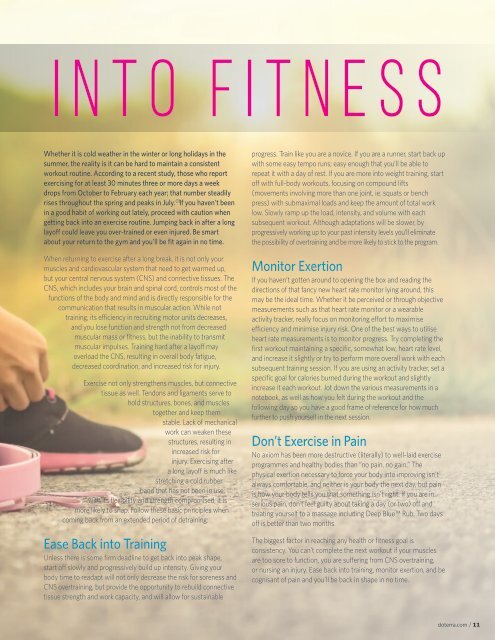doTERRA European Living Magazine Summer 2018
This is the Summer 2018 of the European doTERRA magazine. Feel free to browse at leisure to appreciate the great work that this Company is doing to help farmers and communities where the plants that produce Certified Pure Therapeutic Grade Essential Oils are grown and how these Oils and many other natural products are assisting so many people with symptoms of poor health and to assist with preventative health care. For further information or to get access to these products watch our 3 introductory videos at www.showmedetails.net or text/call +447970494774. Thank You. David Miller
This is the Summer 2018 of the European doTERRA magazine. Feel free to browse at leisure to appreciate the great work that this Company is doing to help farmers and communities where the plants that produce Certified Pure Therapeutic Grade Essential Oils are grown and how these Oils and many other natural products are assisting so many people with symptoms of poor health and to assist with preventative health care. For further information or to get access to these products watch our 3 introductory videos at www.showmedetails.net or text/call +447970494774. Thank You. David Miller
Create successful ePaper yourself
Turn your PDF publications into a flip-book with our unique Google optimized e-Paper software.
Into Fitness<br />
Whether it is cold weather in the winter or long holidays in the<br />
summer, the reality is it can be hard to maintain a consistent<br />
workout routine. According to a recent study, those who report<br />
exercising for at least 30 minutes three or more days a week<br />
drops from October to February each year; that number steadily<br />
rises throughout the spring and peaks in July. (1) If you haven’t been<br />
in a good habit of working out lately, proceed with caution when<br />
getting back into an exercise routine. Jumping back in after a long<br />
layoff could leave you over-trained or even injured. Be smart<br />
about your return to the gym and you’ll be fit again in no time.<br />
When returning to exercise after a long break, it is not only your<br />
muscles and cardiovascular system that need to get warmed up,<br />
but your central nervous system (CNS) and connective tissues. The<br />
CNS, which includes your brain and spinal cord, controls most of the<br />
functions of the body and mind and is directly responsible for the<br />
communication that results in muscular action. While not<br />
training, its efficiency in recruiting motor units decreases,<br />
and you lose function and strength not from decreased<br />
muscular mass or fitness, but the inability to transmit<br />
muscular impulses. Training hard after a layoff may<br />
overload the CNS, resulting in overall body fatigue,<br />
decreased coordination, and increased risk for injury.<br />
Exercise not only strengthens muscles, but connective<br />
tissue as well. Tendons and ligaments serve to<br />
hold structures, bones, and muscles<br />
together and keep them<br />
stable. Lack of mechanical<br />
work can weaken these<br />
structures, resulting in<br />
increased risk for<br />
injury. Exercising after<br />
a long layoff is much like<br />
stretching a cold rubber<br />
band that has not been in use;<br />
with its flexibility and strength compromised, it is<br />
more likely to snap. Follow these basic principles when<br />
coming back from an extended period of detraining:<br />
Ease Back into Training<br />
Unless there is some firm deadline to get back into peak shape,<br />
start off slowly and progressively build up intensity. Giving your<br />
body time to readapt will not only decrease the risk for soreness and<br />
CNS overtraining, but provide the opportunity to rebuild connective<br />
tissue strength and work capacity, and will allow for sustainable<br />
progress. Train like you are a novice. If you are a runner, start back up<br />
with some easy tempo runs; easy enough that you’ll be able to<br />
repeat it with a day of rest. If you are more into weight training, start<br />
off with full-body workouts, focusing on compound lifts<br />
(movements involving more than one joint, ie. squats or bench<br />
press) with submaximal loads and keep the amount of total work<br />
low. Slowly ramp up the load, intensity, and volume with each<br />
subsequent workout. Although adaptations will be slower, by<br />
progressively working up to your past intensity levels you’ll eliminate<br />
the pos sibility of overtraining and be more likely to stick to the program.<br />
Monitor Exertion<br />
If you haven’t gotten around to opening the box and reading the<br />
directions of that fancy new heart rate monitor lying around, this<br />
may be the ideal time. Whether it be perceived or through objective<br />
measurements such as that heart rate monitor or a wearable<br />
activity tracker, really focus on monitoring effort to maximise<br />
efficiency and minimise injury risk. One of the best ways to utilise<br />
heart rate measurements is to monitor progress. Try completing the<br />
first workout maintaining a specific, somewhat low, heart rate level,<br />
and increase it slightly or try to perform more overall work with each<br />
subsequent training session. If you are using an activity tracker, set a<br />
specific goal for calories burned during the workout and slightly<br />
increase it each workout. Jot down the various measurements in a<br />
notebook, as well as how you felt during the workout and the<br />
following day so you have a good frame of ref erence for how much<br />
further to push yourself in the next session.<br />
Don’t Exercise in Pain<br />
No axiom has been more destructive (literally) to well-laid exercise<br />
programmes and healthy bodies than “no pain, no gain.” The<br />
physical exertion necessary to force your body into improving isn’t<br />
always comfortable, and neither is your body the next day, but pain<br />
is how your body tells you that something isn’t right. If you are in<br />
serious pain, don’t feel guilty about taking a day (or two) off and<br />
treating yourself to a massage including Deep Blue Rub. Two days<br />
off is better than two months.<br />
The biggest factor in reaching any health or fitness goal is<br />
consistency. You can’t complete the next workout if your muscles<br />
are too sore to function, you are suffering from CNS overtraining,<br />
or nursing an injury. Ease back into training, monitor exertion, and be<br />
cognisant of pain and you’ll be back in shape in no time.<br />
doterra.com / 11




